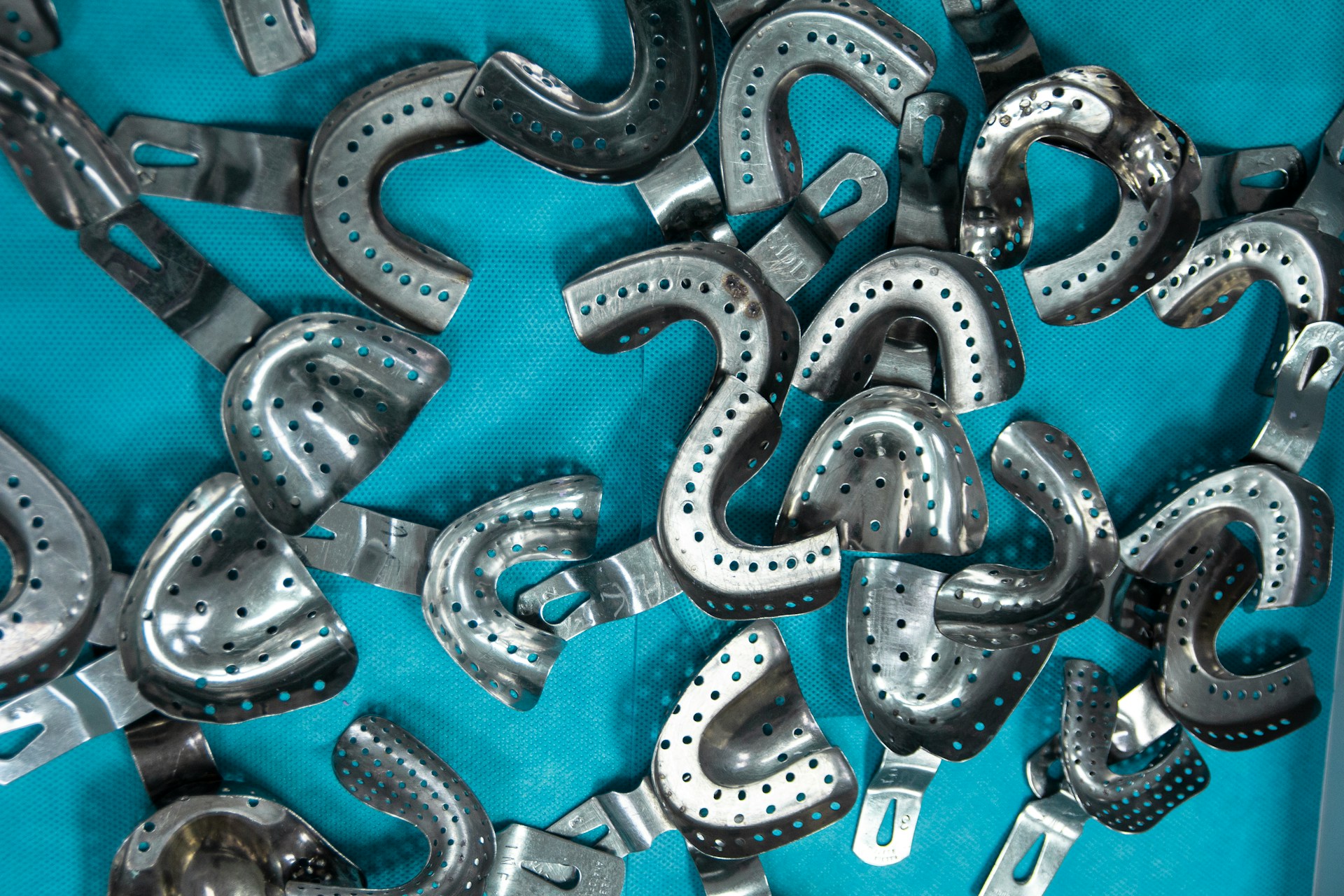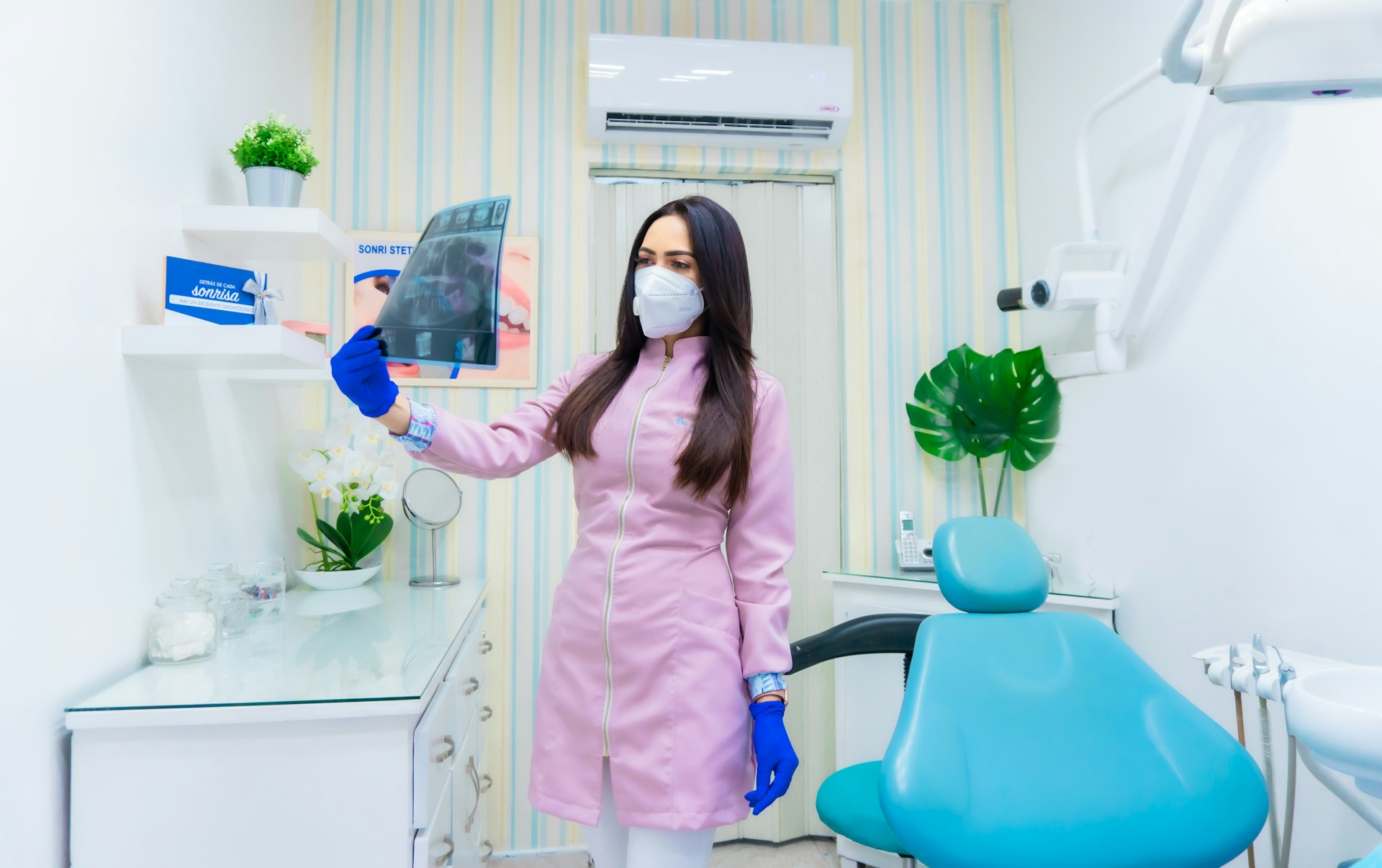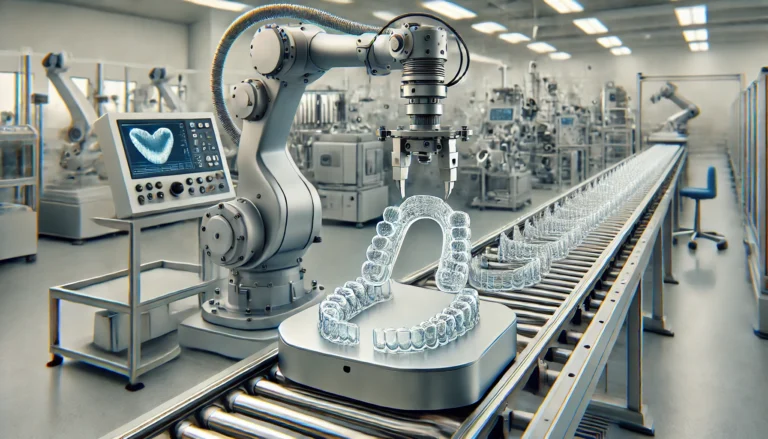
If you are considering a straighter smile, Invisalign presents a popular orthodontic solution that provides a discreet and comfortable alternative to traditional braces.
This guide will cover what to expect during your first Invisalign fitting, starting from the initial consultation to what you can expect after receiving your aligners.
Whether you have questions about the process, what to bring, or how to adjust to your new aligners, this information aims to assist you. Let’s explore the journey toward your best smile together!
What is Invisalign?

Invisalign represents a modern approach to orthodontic treatment, employing clear aligners to straighten teeth and improve bite alignment. This option provides a discreet and comfortable alternative to traditional braces.
The innovative technology not only enhances the aesthetic appeal of a smile but also contributes to better oral health, making it a preferred choice among teenagers and adults alike who are looking for a smile transformation.
Through the use of 3D imaging technology, Invisalign customises aligners tailored to each patient’s unique dental impressions, ensuring a personalised care experience throughout the entire treatment journey.
How Does Invisalign Work?
Invisalign functions by utilising a series of custom-made clear aligners that gradually move your teeth into the desired position. Each set of aligner trays is specifically designed to apply gentle pressure to particular teeth, guiding them through the alignment process in a controlled manner.
While the cost of Invisalign aligners can vary depending on the complexity of the case and treatment duration, many patients find the investment worthwhile for the discreet and effective results they offer.
During the treatment period, patients are expected to wear each set of aligners for the recommended duration and attend follow-up appointments with their orthodontist. These visits are essential for monitoring progress, making necessary adjustments, and ensuring compliance with the treatment plan to achieve the best possible results.
What Happens During Your First Invisalign Fitting?
At your first Invisalign fitting, you will have a comprehensive consultation with your orthodontist to evaluate your oral health and discuss your treatment goals. This initial visit is essential, as it establishes the foundation for your personalised treatment plan.
During this appointment, the orthodontist will take dental impressions and may also perform X-rays to create an accurate model of your teeth. Following a detailed clinical assessment, the orthodontist will outline the fitting process, explain what you can expect, and address any questions you may have about the journey ahead.
1. Consultation with Orthodontist
The consultation with the orthodontist is a crucial first step in the Invisalign journey, where expectations are established and any questions regarding the treatment process are addressed. During this appointment, the orthodontist will review your dental history, assess your oral health, and discuss your aesthetic goals to determine if Invisalign is the appropriate option for you.
This initial meeting not only provides a thorough understanding of the patient’s unique dental needs but also fosters a foundational relationship based on trust and open communication. Patients can anticipate discussions about various treatment options, including the expected duration of the process, the frequency of visits, and best practices for caring for their aligners to achieve optimal results.
The orthodontist plays an essential role in guiding the patient through each step, addressing any concerns related to comfort and convenience, and ultimately creating a customised treatment plan. This collaborative approach ensures that the patient’s expectations are met, paving the way for a successful transformation.
2. X-rays and Impressions
X-rays and dental impressions play a crucial role in the Invisalign process, providing a detailed view of your teeth and jaw structure necessary for developing an accurate treatment plan. These diagnostic tools enable your orthodontist to analyse your bite alignment and determine the specific movements needed for effective teeth movement.
This ultimately aids in the design of your custom aligners using advanced 3D imaging technology.
The importance of these assessments cannot be overstated, as they offer invaluable insights into the precise positioning of each tooth. Utilising 3D imaging allows the orthodontist to visualise not only the current state of your dental anatomy but also simulate potential outcomes throughout your treatment journey.
This thorough clinical evaluation is essential for crafting aligners that fit comfortably and gradually guide your teeth into their desired positions. In doing so, it fosters a more efficient and targeted approach to orthodontic care.
The comprehensive understanding gained from X-rays and impressions serves as a foundation for achieving optimal results in the quest for a perfectly aligned smile.
3. Customised Treatment Plan
Once the orthodontist has gathered the necessary data, they will create a customised treatment plan specifically designed to meet your needs. This plan will outline the expected duration and objectives of your Invisalign journey.
It will include details such as the number of aligner trays required, the sequence of teeth movement, and the anticipated adjustments needed throughout the process. This approach ensures that you remain informed and engaged in your orthodontic care.
Having such a comprehensive blueprint is essential, as it not only facilitates effective alignment but also helps you understand the treatment dynamics clearly. Patient education is crucial in this process; it enables individuals to comprehend their specific goals and the stages of progress involved.
Regular monitoring of treatment milestones is vital, as it allows for timely interventions if necessary and helps maintain enthusiasm and accountability throughout the journey. With consistent communication and active involvement in their treatment, patients can truly appreciate the transformative journey made possible by these modern aligner trays.
4. Receiving Your First Set of Aligners
Receiving your first set of aligners is an exciting milestone in your Invisalign treatment, as it marks the beginning of your journey towards a straighter smile. During the fitting appointment, the orthodontist will ensure that the aligner trays fit comfortably and address any concerns you may have regarding comfort and the alignment process. They will also provide guidance on how to properly wear and care for your aligners.
This initial interaction is crucial; a well-fitted aligner not only enhances the effectiveness of the treatment but also ensures that your experience remains pleasant and manageable. The orthodontist’s support is vital in easing any apprehensions you might have, offering personalised advice tailored to your specific needs.
Throughout the treatment, regular check-ups and adjustments may be necessary to maintain an optimal fit and comfort level.
Proper maintenance of your aligners is equally important. Keeping them clean and adhering to the recommended wear schedule will directly influence the efficiency of the process, ultimately leading to the desired results in a timely manner.
What Should You Bring to Your First Invisalign Fitting?

When preparing for your first Invisalign fitting, it is important to come equipped to ensure a smooth and efficient process. Bringing relevant documents, such as your dental records and insurance information, along with any questions you may have for your orthodontist will help you make the most of your appointment and clarify any uncertainties regarding your treatment and dental care.
It may also be beneficial to pack a list of your current medications and any records from previous orthodontic treatments, if applicable. Additionally, consider bringing non-perishable snacks and a water bottle for after the appointment, as the fitting process may take some time and adjustments may need to settle.
Scheduling your appointment in advance and confirming it the day before can further enhance your experience; being fully engaged during your consultation is key. Ultimately, being organised and informed facilitates smooth communication and demonstrates a proactive approach to your oral health journey.
What Can You Expect After Your First Invisalign Fitting?
Following your initial fitting of Invisalign, it is quite normal to experience some mild discomfort as your teeth begin to adjust to the new aligners. This discomfort is actually a positive indication that the treatment is effective.
In the days that follow, you might feel a slight pressure on your teeth, which is expected during this early phase. Your orthodontist will be closely monitoring your progress and will make any necessary adjustments during your follow-up appointments.
1. Mild Discomfort
Mild discomfort is a typical aspect of the Invisalign experience, particularly after receiving a new set of aligners, as your teeth begin to shift into their new positions. This sensation can vary from person to person, but it generally subsides within a few days. Adhering to the recommended aligner wear time can help facilitate this transition.
It is essential to recognise that this mild discomfort often signifies that the aligners are effectively working to realign your teeth. Factors such as changes in pressure on your teeth or the adjustment to the new aligner material can contribute to this temporary sensation.
By prioritising your aligner wear time, you not only ensure that your treatment progresses smoothly but also minimise any discomfort experienced during this adjustment period. Listening to your body and interpreting these sensations as a sign of progress can significantly enhance your overall experience as a patient.
2. Speech Changes
When you first start wearing your Invisalign aligners, you may notice some changes in your speech due to the unfamiliar presence of the trays in your mouth. However, with practice and time, most individuals adjust their speech, and any initial difficulties tend to fade, especially if they wear their aligners consistently and adhere to their orthodontist’s instructions.
Common speech changes during this adjustment period may include a slight lisp or challenges in pronouncing certain sounds, particularly if the aligners are covering the tongue or palate. To help address these speech alterations, it is beneficial to read aloud or practise speaking in front of a mirror. Engaging in daily conversations and even rehearsing challenging phrases can significantly aid in making the transition smoother.
It is important to recognise that these speech changes are temporary, and maintaining a positive mindset can greatly enhance the adjustment process. Additionally, keeping the aligners clean and following the care guidelines provided will contribute to a more comfortable experience, ultimately leading to successful adjustments and increased confidence in speech.
3. Adjusting to Wearing Aligners
Adjusting to wearing aligners may take some time, but many patients notice a significant improvement in comfort after the initial adjustment period. It is essential to be patient and adhere to the recommended aligner wear time, as this practice ensures effective teeth movement and contributes to successful outcomes throughout the treatment journey.
During this period, there are several strategies that can enhance comfort and support compliance.
- It is advisable to wear the aligners for at least 20 to 22 hours each day, removing them only for meals and oral hygiene routines. This not only promotes better results but also helps individuals become accustomed to the feeling of the aligners.
- If discomfort arises, over-the-counter pain relief can provide relief during the initial days after switching to a new set of aligners.
- Maintaining a consistent schedule for wearing the aligners can make a significant difference; utilising reminders on a smartphone can be an effective method to stay on track.
Remember, maintaining routine care and addressing any discomfort promptly can lead to a more pleasant experience overall.
How Long Does the First Invisalign Fitting Take?
The duration of your first Invisalign fitting appointment can vary depending on the specific procedures involved, but you can generally expect it to last between one and two hours. During this time, your orthodontist will perform a comprehensive evaluation of your orthodontic needs, take dental impressions, and guide you through the treatment process, ensuring that you feel well-informed and comfortable.
Several factors can influence the length of the appointment, such as the complexity of your case and any additional treatments that may be required. For instance, if adjustments to previous dental work are necessary, this could extend the appointment time.
Patients can anticipate a thorough discussion regarding their unique orthodontic needs, which will assist in scheduling future appointments efficiently. The use of 3D imaging technology may also be incorporated into the process, enhancing the precision of the fitting.
This initial appointment is essential for establishing a personalised treatment plan tailored to meet the patient’s goals.
What Should You Do After Your First Invisalign Fitting?

Following your first Invisalign fitting, it is important to follow your orthodontist’s recommendations to facilitate a smooth and effective treatment process.
This involves wearing your aligners for the suggested duration, practising good oral hygiene, and attending follow-up appointments for progress assessments and necessary adjustments.
Each of these steps plays a vital role in helping you achieve your treatment goals.
1. Wear Aligners for Recommended Time
Wearing your Invisalign aligners for the recommended duration each day is essential for the success of your treatment plan. Typically, this involves keeping your aligners in for approximately 20 to 22 hours daily, removing them only for eating, drinking, brushing, and flossing.
Adhering to this schedule not only maximises the effectiveness of each aligner but also significantly reduces the overall treatment duration. When patients follow the prescribed wear time, it facilitates smoother and more efficient tooth movement, ensuring that the treatment progresses as intended.
To help enhance compliance, setting reminders on your phone can be particularly beneficial, as can maintaining a daily log to track your wear time. Having a dedicated case for your aligners can also minimise the risk of misplacing them, promoting consistent use.
Additionally, staying motivated by visualising the end result—a straighter, healthier smile—can greatly contribute to a successful treatment journey.
2. Keep Aligners Clean
Maintaining the cleanliness of your Invisalign aligners is crucial for ensuring good oral hygiene and preventing discomfort or dental issues throughout your treatment. It is advisable to regularly clean your aligners with a gentle toothbrush and mild soap or a specialised cleaning solution. This approach helps keep them clear and free of bacteria.
Plus this foundational care routine, it is important to rinse your aligners with water each time you remove them. This simple step minimises the buildup of plaque.
You should also consider soaking them in a designated cleaning solution on a regular basis to eliminate stubborn stains and odours. It is essential to avoid using hot water or harsh chemicals, as these can warp the aligners, resulting in discomfort and potentially affecting the effectiveness of your treatment.
A consistent care regimen not only enhances the clarity of the aligners but also aids in maintaining optimal oral health, thereby reducing the likelihood of complications during your aligner journey.
3. Follow Any Additional Instructions from Orthodontist
Following any additional instructions from your orthodontist is essential for the success of your Invisalign treatment. These instructions may encompass specific recommendations regarding aligner adjustments, dietary restrictions, and aftercare procedures designed to enhance your comfort.
By adhering to these guidelines, you not only ensure that the aligners fit properly and function effectively, but you also contribute significantly to the overall efficiency of the treatment process. It is important for patients to recognise that follow-up care is crucial, as it allows the orthodontist to monitor progress and make any necessary adjustments to the treatment plan.
Understanding the importance of consistent aligner usage and maintaining proper oral hygiene can greatly influence treatment outcomes. By fostering ongoing communication and support, patients can increase their chances of achieving the desired results. Therefore, prioritising these aspects throughout the Invisalign journey is imperative.
Frequently Asked Questions: What to Expect During Your First Invisalign Fitting
What can I expect during my first Invisalign fitting?
During your first Invisalign fitting, your dentist will assess your teeth and jaw alignment, take x-rays and impressions, and discuss your treatment plan with you.
Will I need to have any special preparations before my first Invisalign fitting?
No, there are no special preparations required before your first Invisalign fitting. Just make sure to brush and floss your teeth before your appointment.
How long does a first Invisalign fitting appointment typically take?
The length of your first Invisalign fitting appointment will vary, but it typically takes about an hour to an hour and a half.
Will I experience any discomfort during my first Invisalign fitting?
You may experience some minor discomfort during your first Invisalign fitting as your dentist takes x-rays and impressions of your teeth, but it should not be painful. If you do experience pain or discomfort, let your dentist know.
Do I need to wear my Invisalign aligners immediately after my first fitting?
No, you will not receive your Invisalign aligners at your first fitting appointment. Your dentist will send your impressions to a lab where your aligners will be custom-made. You will receive your aligners at a later appointment.
What should I do if I have any questions or concerns during my first Invisalign fitting?
If you have any questions or concerns during your first Invisalign fitting, don’t hesitate to ask your dentist. They will be happy to address any concerns you may have and ensure you feel comfortable with your treatment plan.





